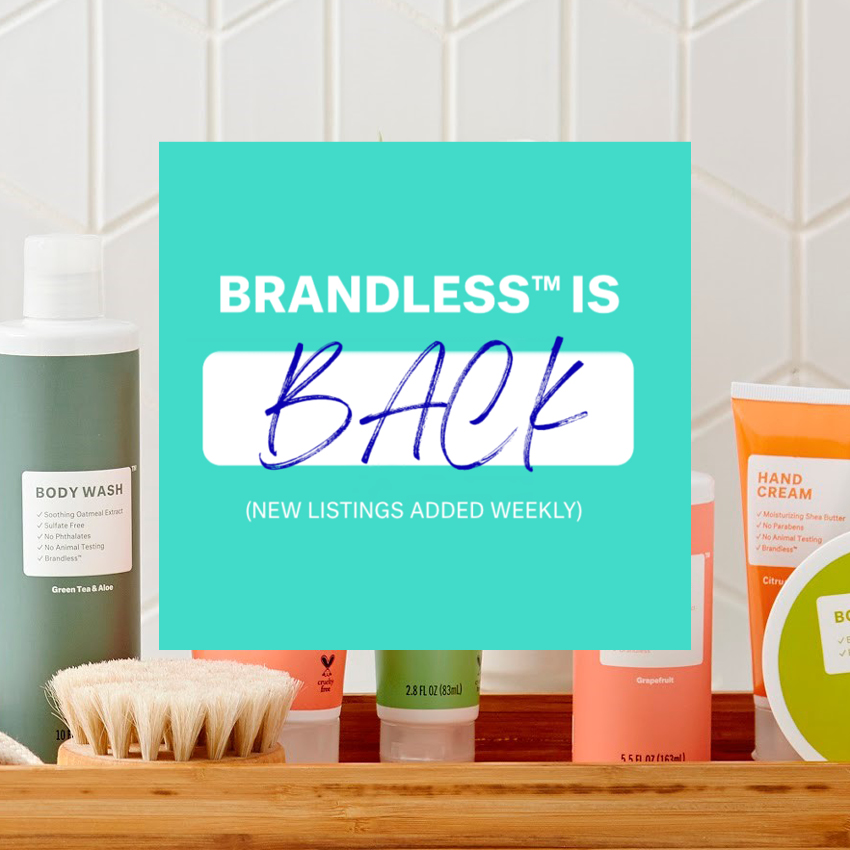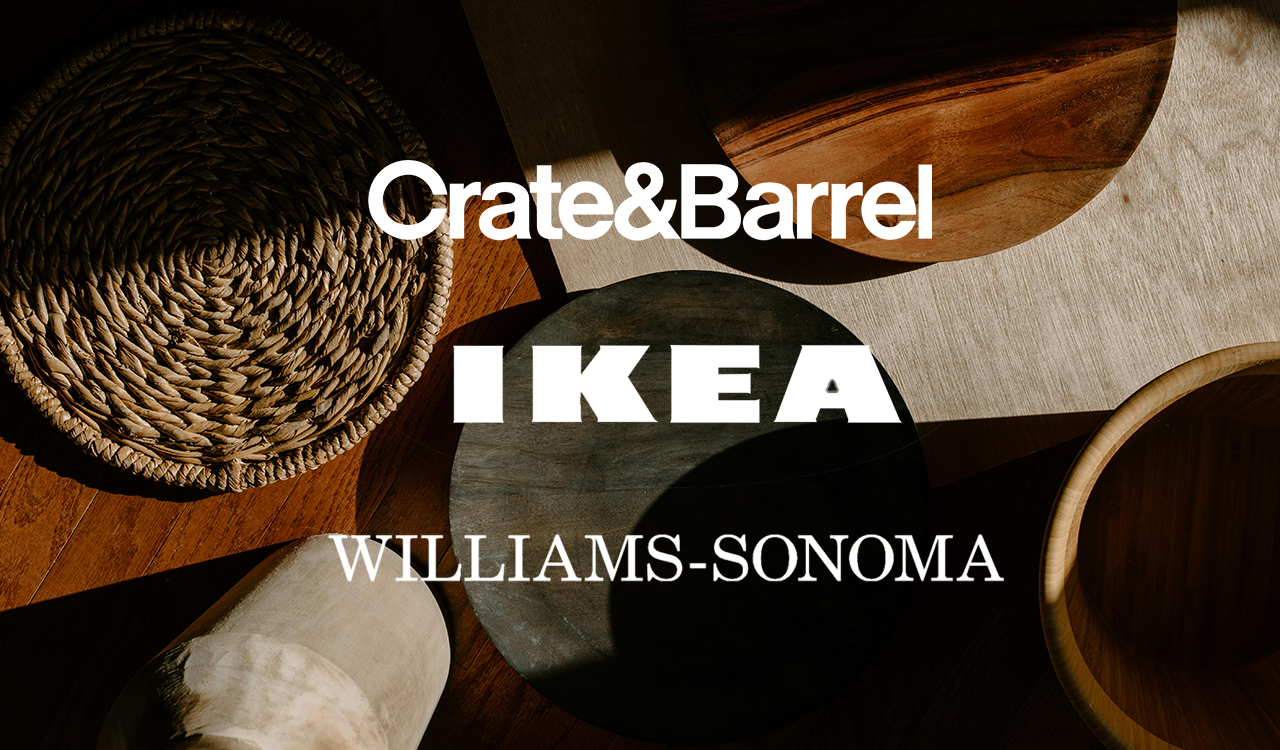It sounded like the perfect retail model. Brandless was the brand that wasn’t a brand with a direct-to-consumer, product-centric sales strategy. For the first two years, every product was just $3. Brandless maintained that this was made possible by the fact that they didn’t charge a “brand tax” and were thus positioned to pass on the savings that would have been spent on marketing and packaging.
In February, Brandless announced they were halting operations. But less than six months after freezing functions, Brandless is coming back. Here’s what they did wrong the first time, what they’re doing differently, and what other DTC brands can learn from their initial failure\’
Marketing Initiatives Fell Flat
Brandless was built on the millennial ideal of total transparency. Yet when you look beneath the surface, the company wasn’t transparent at all about their marketing initiatives. For one, “Brandless” was a brand in itself––using trendy design firm Red Antler to draft their logo and packaging. Brandless also experimented with pop-up shops and regularly used banner ads to target their core demographic. I personally ordered from Brandless quite a bit in their heyday and received a pack of logo stickers with every purchase. (What retailers think consumers are going to do with a bunch of stickers with their logo on them is beyond me, but it proves that Brandless was also manufacturing physical marketing materials.)
[callout]Brandless also followed in the footsteps of many other suffering brands by pivoting too much too quickly. It’s important for brands to remain agile, but if your key marketing tenet is that everything you sell is just $3 then you need to stick to it.[/callout]
So, the no “brand tax” thing was a farce. Direct to consumer marketing campaigns require a lot of engagement and a strong personality. While Brandless’ value-based marketing and simple lists of ingredients were geared to capture millennials’ attention, they didn’t have the humor or personality of reigning DTC brands like Warby Parker, or the social media following of Glossier or Julep. Brandless never took the right steps to capture their niche’s market share.
Loyalty Wasn’t Built
Customer loyalty is another arena where Brandless’ innovative take didn’t catch on. Where other DTC brands operate on a membership model or have price points high enough to sustain the cost of operating, Brandless simply counted on becoming the destination for consumer household goods (but without the value proposition to sustain that designation). They didn’t even launch their optional subscription model until 2019 when the brand was already going under.
During Covid-19, DTC retail models are once again on the rise. However, consumer interest in these models is contingent upon the DTC company’s ability to build consumer trust. Brandless may have marketed itself as a transparent enterprise, but reality didn’t always align with this. When Brandless stepped away from their $3 pricing model and started selling goods at price points as high as $200, it alienated a lot of the consumers who were buying into their no “brand tax” marketing strategy.
The Pricing Didn’t Make Sense
Brandless offered a murky cost/value proposition––relying on low-margin products to make sales. The pricing structure was built on the assumption that when customers got a good deal on certain items, they’d pay $3 a toothbrush for the rest. The pricing on individual products wasn’t always the best value and they were just trying to slip it under the rug without incentivizing customers to make bulk or larger purchases. It should come as no surprise, then, that the brand failed to achieve significant margins. They tried to fix this by selling higher margin goods. But there was no membership model based on regular replenishment. Instead, all orders were shipped with a $5 flat fee.
Since customers could pick and choose the products they wanted, most customers just ordered the products that were the best value for them (and the lowest margin for Brandless). Customers could pay $36 a year for free shipping on orders of all sizes, which didn’t add up when customers were regularly ordering just a few low-margin items.
What They’re Doing this Time
You know what’s funny? With Brandless’ plan for relaunch, the company is, for the first time, live up to the “Brandless” name. There are no fancy big business titles behind the launch this time around. The new CEO Ryan Treft is a digital marketing executive from Salt Lake City, Utah who teaches at a local college part-time. The reopening has the low-key value focus that Brandless always advertised. They already launched a bevy of product bundles under Treft’s ownership featuring some of the company’s bestsellers, with the stipulation that the bundles will no longer be available once they launch their new assortment.
The new Brandless will attempt to incentivize repeat purchases by offering a small (5-10 percent) discount on product subscriptions. As for the assortment itself, it’s going to be more focused on high quality CPG goods and less on appliances––really locking down the value proposition for millennial-minded consumers. As Treft himself told GroceryDive, “There’s going to be a lot of hard goods that we get out of. It’s really difficult to be able to make the economics work and make it obvious you’re offering great value on a can opener or a spatula, compared to a bag of moringa powder that’s organic, gluten-free and vegan.”
Looking Forward at Next Year’s DTC Brands
There’s a lot we can learn from Brandless’ failure and subsequent relaunch. The first takeaway is that marketing needs to be a part of every DTC brand’s strategy. So, you might as well be transparent about it––especially if your brand is trying to lock down value-oriented consumer spend. They’re known for doing their research and they will do price comparisons down to the minutiae.
Brandless also followed in the footsteps of many other suffering brands by pivoting too much too quickly. It’s important for brands to remain agile, but if your key marketing tenet is that everything you sell is just $3 then you need to stick to it. Nothing severs a new customer relationship faster than pricing inconsistency early in the game.
The new Brandless will be focused on CPG goods: less expensive big names, a less confusing value proposition, and a more humanistic approach. But Brandless’ 498k social media followers are going to need to see more than just a few product bundles to reengage with the brand. It’s time for real, consistent pricing transparency. If Treft is able to activate the next-gen consumers in his college courses to do this, then there’s an exciting future for Brandless’ relaunch. If not, then nobody will know it even happened.




